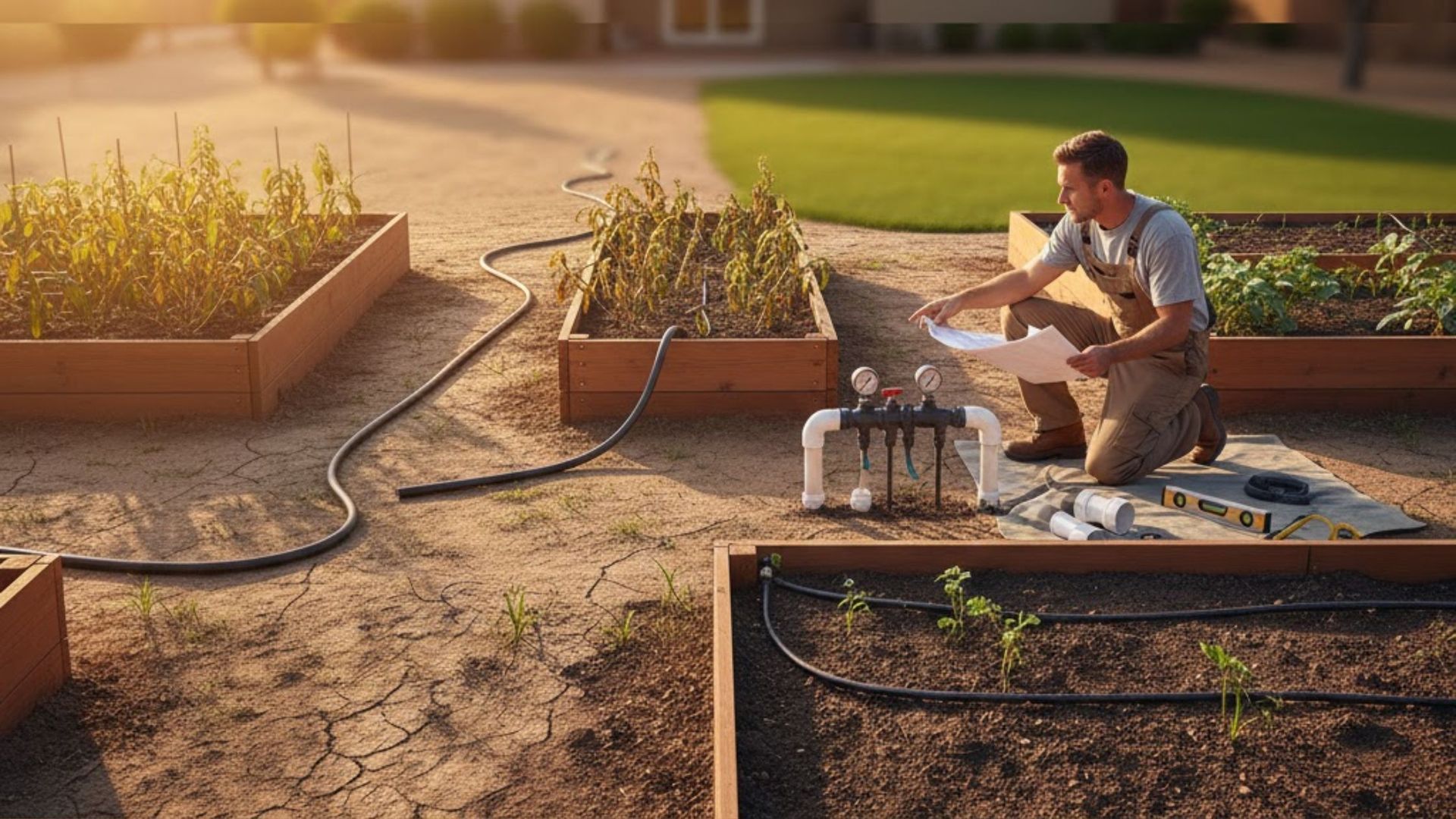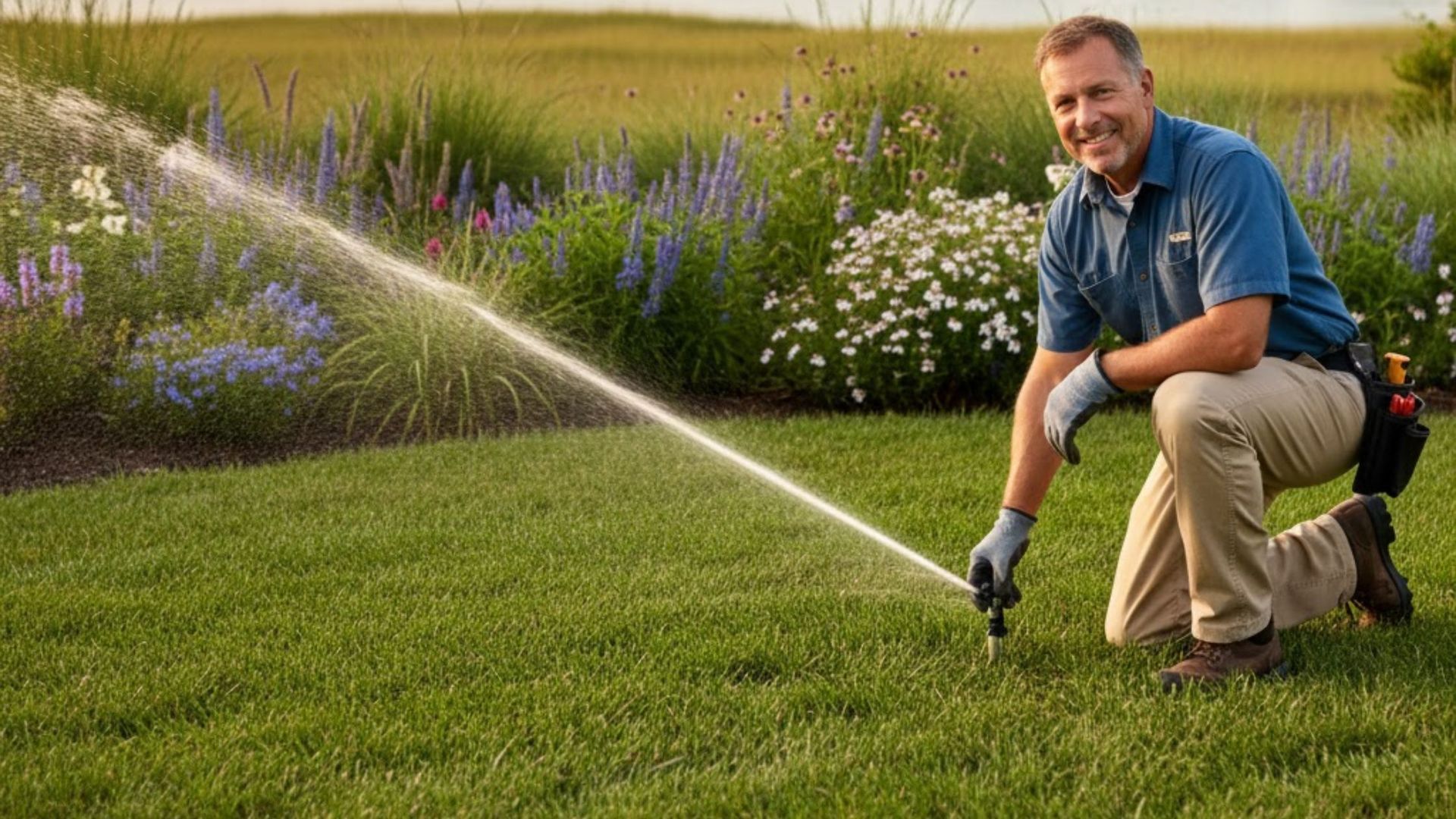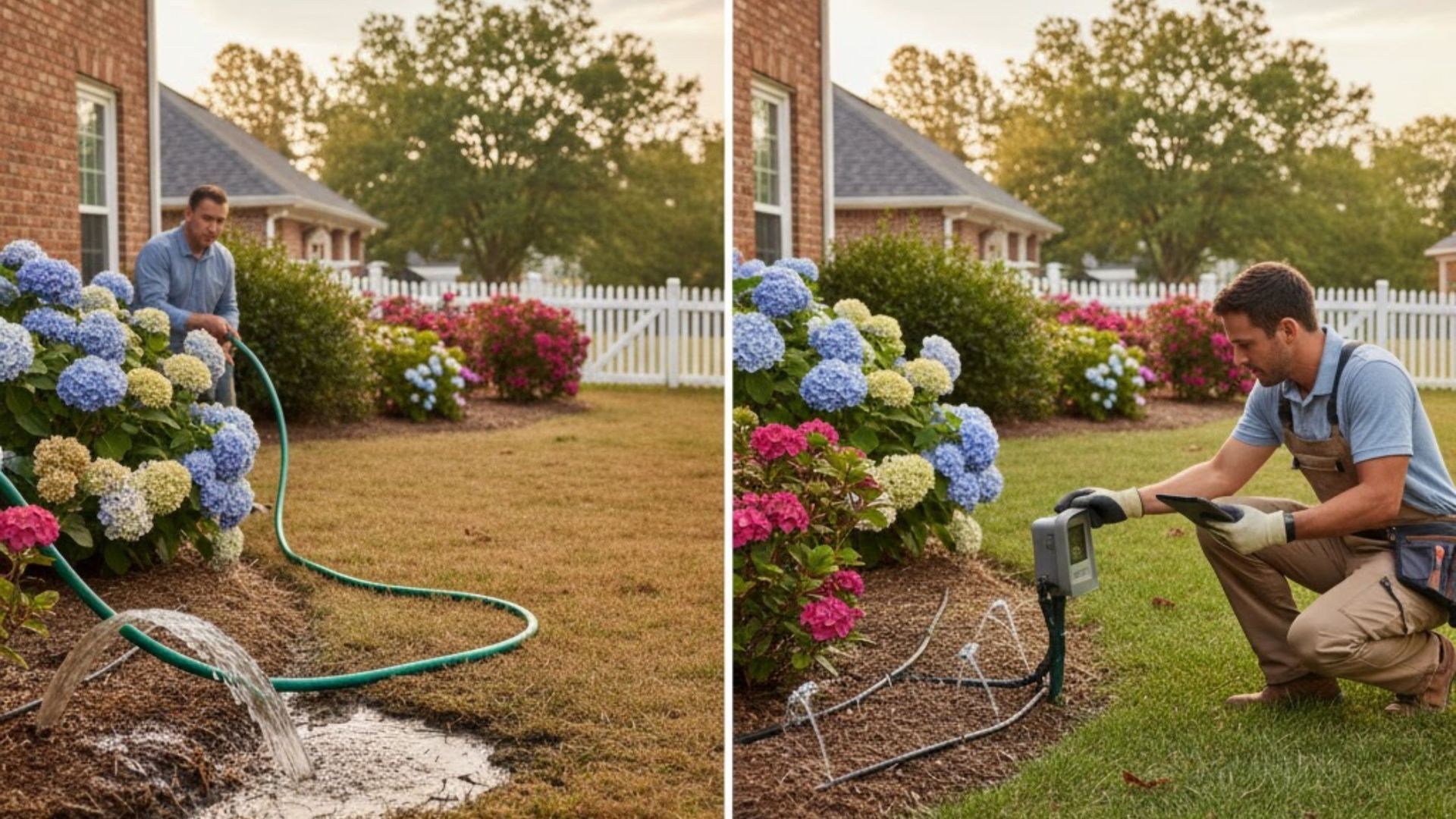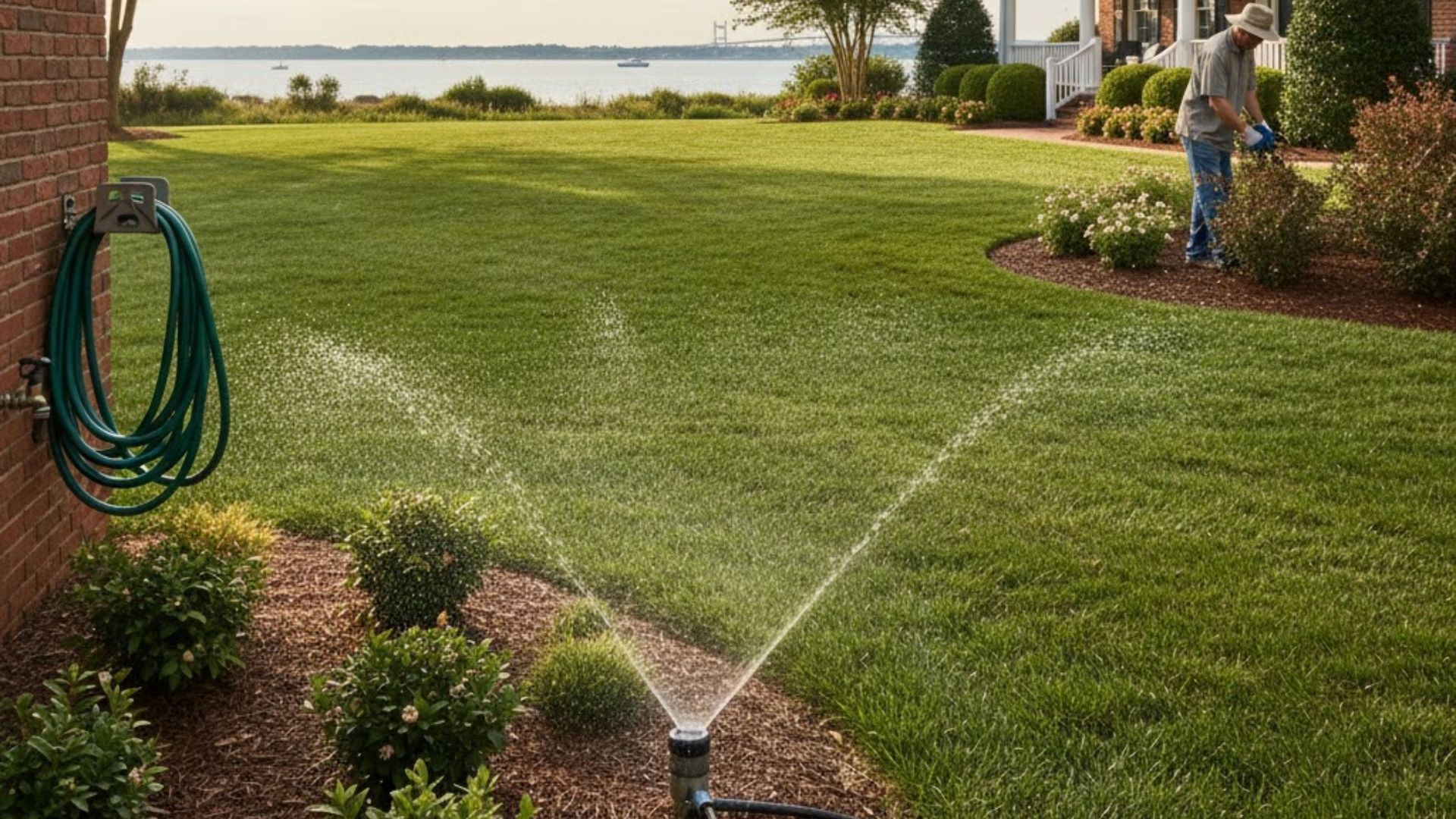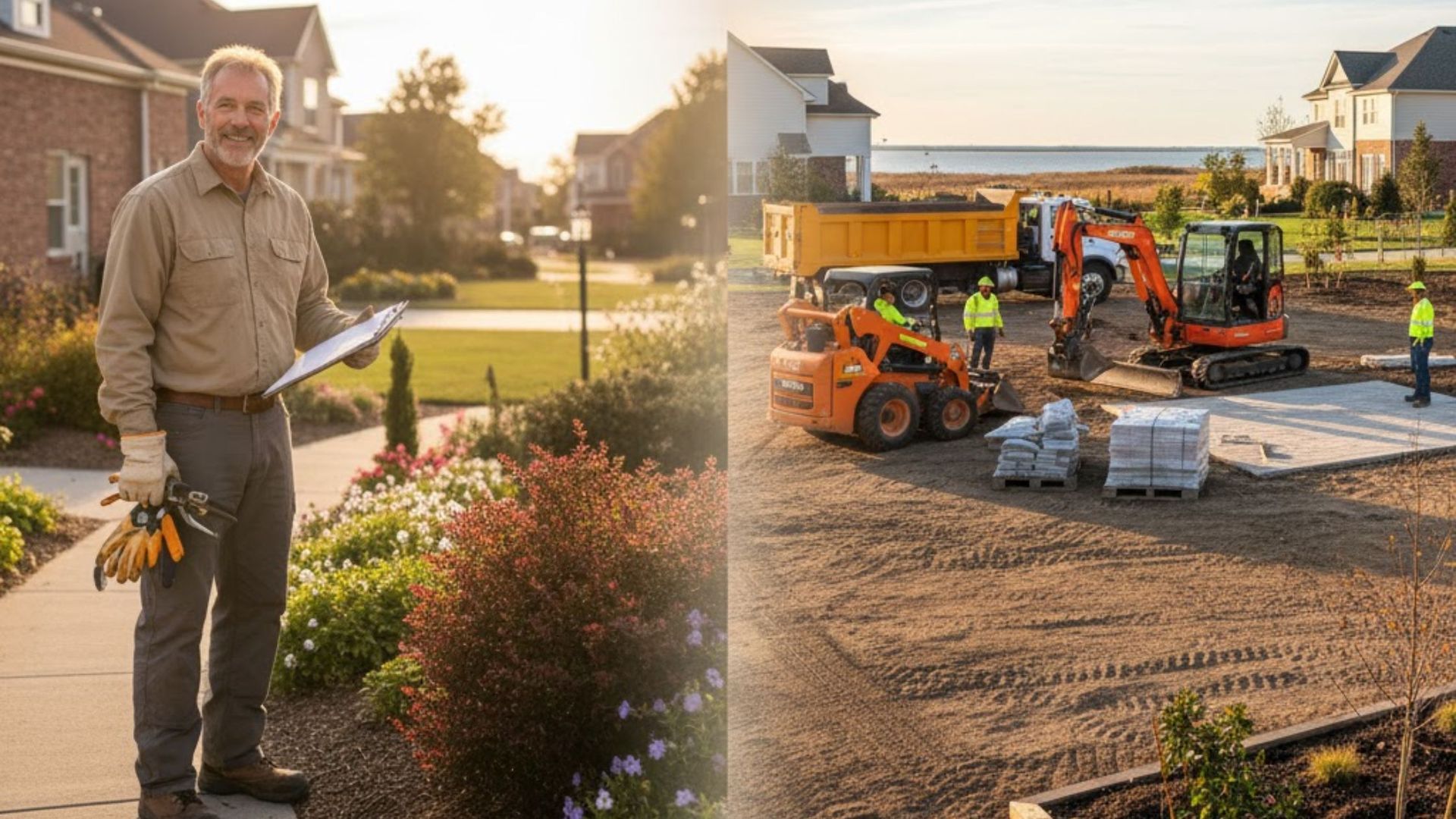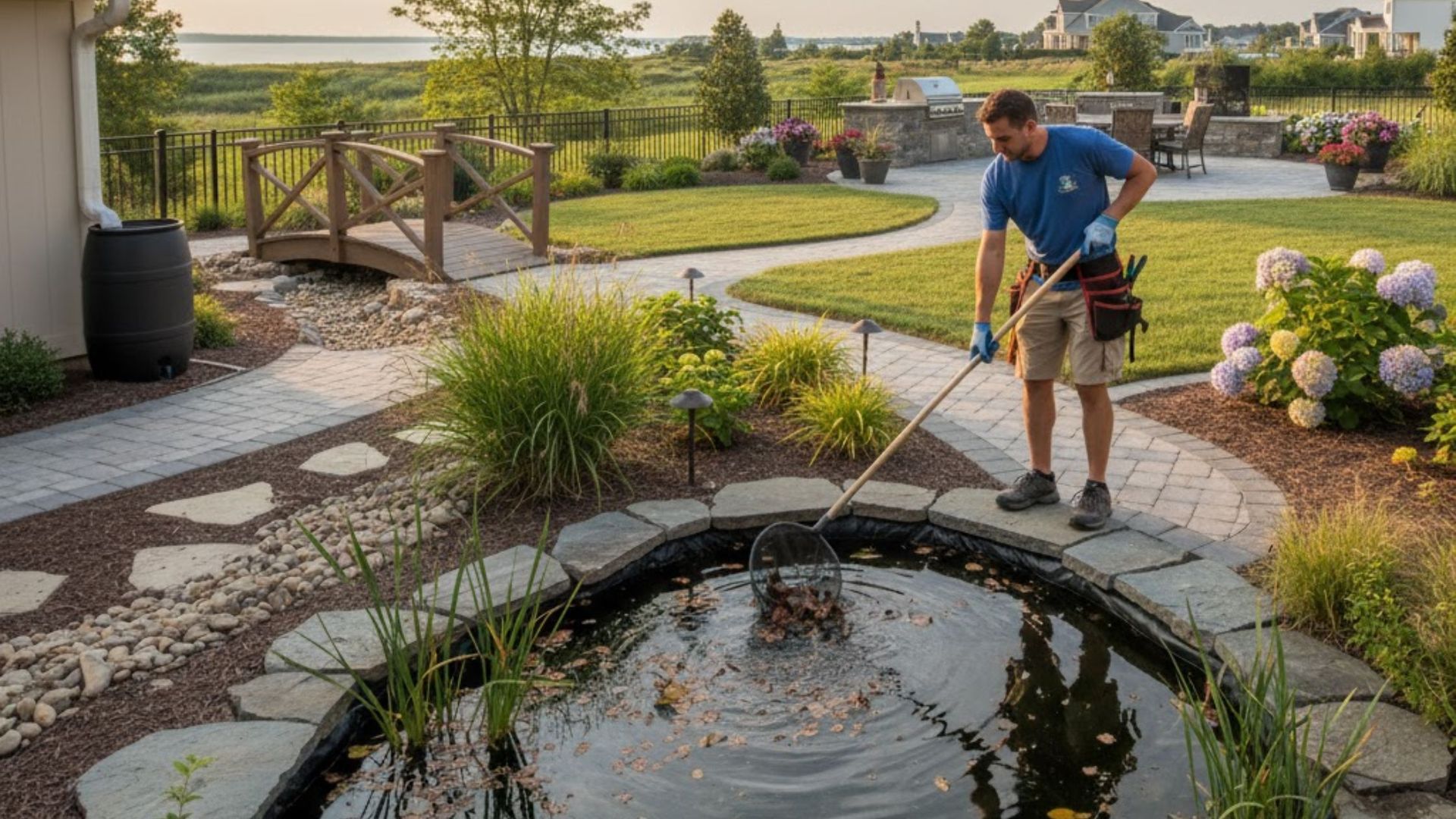How do soil type and local climate in Williamsburg affect irrigation efficiency and system design?
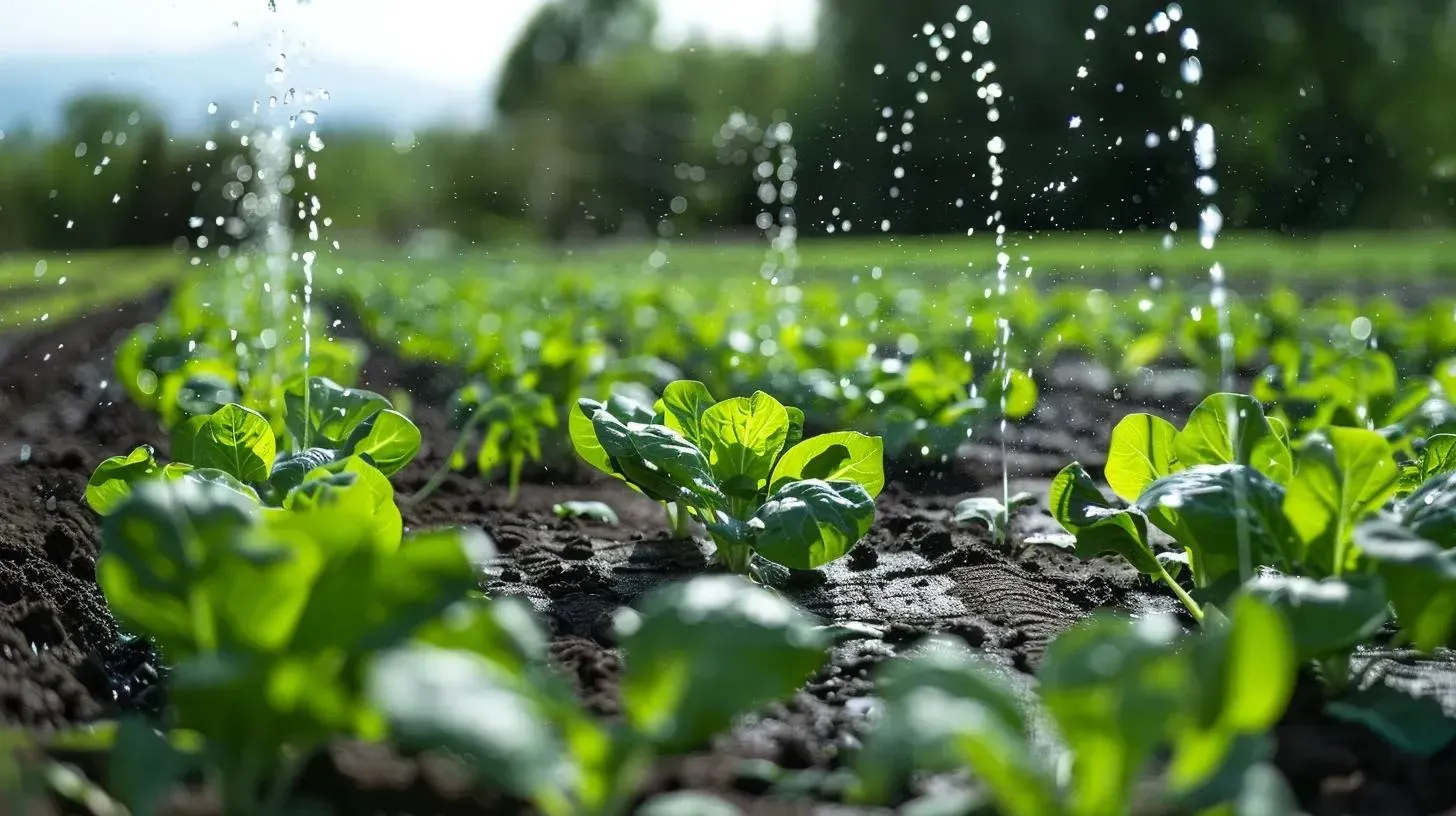
Achieving a truly vibrant, resilient landscape in Southeastern Virginia is much more complex than simply turning on a garden hose. The success of your turf and plantings depends entirely on a perfectly calibrated watering system, which must account for the dual challenges presented by our region: the unique composition of the earth beneath your feet and the frequently shifting local weather patterns. Getting this balance right is the defining factor in maximizing water savings, minimizing plant stress, and protecting your property investment. Homeowners who recognize the importance of these two foundational elements—soil and climate—are already on the path to superior lawn health and efficiency. This critical understanding is exactly why working with an expert Irrigation Company in Williamsburg, VA, provides such immense long-term value, ensuring your system is built not just for today, but for every season ahead.
The intricate relationship between geology and meteorology means a one-size-fits-all approach to watering simply does not work here. What keeps a yard lush in the sandy coastal plains of Virginia Beach would actively harm a yard situated on the more clay-heavy soils found closer to the James River. When designing or upgrading your system, every choice—from the type of sprinkler head used to the duration of the watering cycle—must be informed by site-specific data. We need to look past general watering advice and focus precisely on how water interacts with the ground in your specific neighborhood.
How Do Williamsburg's Unique Soil and Climate Conditions Determine the Best Irrigation Schedule?
Understanding the subsoil characteristics is the first step toward an effective watering regimen. The texture of the ground dictates two fundamental variables: how fast water can soak in and how long the ground can hold that moisture for plants to use. Applying water faster than the ground can absorb it leads directly to wasteful runoff and erosion, which is a major concern for both utility bills and environmental responsibility in the James City County area. Conversely, applying water too slowly, or not often enough, can stress root systems, especially during the intense heat of summer.
This fundamental principle is the bedrock of system design. Coarser, sandier earth, often found in parts of the Hampton Roads area, absorbs water quickly but loses it rapidly to gravity, requiring shorter, more frequent watering cycles. Clay-rich earth, more prevalent in the Irrigation Company in Williamsburg, VA service area, absorbs water slowly—demanding low application rates—but holds onto that moisture for a much longer duration. This is why a custom-designed system is paramount, as it allows for the creation of multiple watering zones tailored to these subtle variations across your landscape.
The Dynamic Science of Williamsburg Soil and Water Movement
The ground is fundamentally composed of three primary particle types: sand, silt, and clay. Sand particles are the largest, offering substantial space between them, which allows water to flow rapidly downward. Silt is medium-sized and provides a better balance, while clay consists of the smallest particles, packing tightly together to create minimal pore space. The specific ratio of these components determines your soil texture and, critically, its hydraulic properties.
Identifying Sand-Dominant Soils
Sandy soils have a high infiltration rate, meaning water is absorbed almost instantly upon contact. While this prevents pooling on the surface, it also means the soil has a very low water-holding capacity. Water quickly percolates past the plant's root zone, becoming gravitational water that is effectively wasted.
- Design Consideration: Irrigation systems must use low-volume, highly precise emitters or sprinkler heads with a very low precipitation rate.
- Scheduling Implication: Watering must be done in multiple, short bursts (known as cycle and soak) to allow water to spread horizontally through capillary action before draining vertically. This is often necessary in areas prone to quick drainage.
Without these adjustments, a standard sprinkler system designed for loam will cause plants in sandy areas to suffer from chronic underwatering, despite the high volume of water being applied. The water simply passes through before the roots can adequately absorb the necessary moisture.
Understanding Clay-Rich Subsoils
In contrast, clay-heavy subsoils, common across many Williamsburg properties, pose the opposite challenge. The tiny particle size leads to a slow intake rate, making them highly susceptible to runoff if water is applied too aggressively. However, once saturated, these soils exhibit a high water-holding capacity because the small pores hold capillary water tightly.
- Design Consideration: Systems must be designed with extreme care to match the low infiltration rate of the clay. This often means using rotary nozzles or drip lines to deliver water at a slower pace.
- Scheduling Implication: Watering frequency should be significantly reduced compared to sandy soils, but the duration should be longer to ensure the deep root zone reaches field capacity.
The danger with clay is the risk of oversaturation, which can lead to standing water, oxygen deprivation, and root rot, particularly in the hot, humid conditions characteristic of the local climate. Proper drainage must often be addressed alongside irrigation design in these areas. For deeper insights into managing water flow around your property, we recommend reviewing our guide on Backflow Prevention for Irrigation Systems.
The Ideal Balance: Loamy Soils
Loamy soil represents the ideal balance, containing a healthy mix of sand, silt, and clay, along with organic matter. This texture promotes good aeration, a moderate infiltration rate, and an excellent water-holding capacity. While rare to find naturally across an entire property, this is the benchmark soil type that system designers aim to accommodate.
- Design Consideration: Loam allows for greater flexibility in sprinkler selection, often accommodating standard fixed-spray or high-efficiency rotating heads without concern for immediate runoff.
- Scheduling Implication: Moderate watering duration and frequency are sufficient, allowing for deep watering that encourages robust root growth while minimizing waste.
The composition of your soil also influences the effective rooting depth of your lawn and plants. A deep, healthy root system in well-aerated loam can tap into soil moisture reserves far better than a shallow root system struggling in dense, compacted clay.
Navigating Williamsburg's Humid Subtropical Climate
The local weather patterns are the second critical piece of the efficiency puzzle. Williamsburg experiences a humid subtropical climate, characterized by significant seasonal variations that constantly challenge any static watering schedule. Our area sees hot, often prolonged, humid summers interspersed with frequent, sometimes heavy, rainfall events. These factors necessitate a system capable of real-time adaptation.
The Role of Evapotranspiration Rates
Evapotranspiration (ET) is the combined process of water evaporating from the ground surface and transpiring from the plant leaves. This rate is driven primarily by temperature, sunlight intensity, humidity, and wind. During the peak summer months, high temperatures and humidity cause ET rates to skyrocket, meaning plants lose moisture much faster than in the cooler spring or fall.
- Scheduling Implication: A smart irrigation controller must use this data to calculate the precise amount of water needed to replenish the moisture lost by the landscape daily. Ignoring high ET rates leads to drought stress; over-relying on a fixed timer leads to massive water waste when the weather changes.
Dealing with Seasonal Extremes and Rainfall
The region’s weather is often unpredictable, swinging from short, intense droughts to sudden, heavy thunderstorms. A conventional timer-based system cannot react to a surprise downpour, leading to entirely wasteful operation soon after the rain has fallen. This is a common source of inefficiency and high utility bills for many homeowners.
- Smart Technology Solution: Integrating smart controls, particularly a reliable rain sensor or weather station, is non-negotiable for efficiency here. This technology instantly interrupts the scheduled watering cycle when sufficient rain is detected, only resuming when the ground moisture level drops below a necessary threshold.
Furthermore, the winter climate brings the risk of seasonal freezing and thawing, which necessitates specialized care. Failing to properly prepare your system for the cold can result in cracked pipes, damaged valves, and major repair costs come spring. This is where professional servicing becomes essential. You can learn more about how to manage these transitions by reading our Williamsburg Guide to Seasonal Irrigation System Care.
Designing an Adaptive System: The Pillars of Efficiency
The best irrigation systems are not simply collections of pipes and heads; they are intelligently designed networks that respond dynamically to both the site's geology and the current atmospheric conditions. The design phase, which includes calculating water pressure and flow rate (PSI and GPM) from your source connection, is the most crucial step.
The Power of Hydrozoning
One of the most effective strategies for maximizing water efficiency is hydrozoning. This practice involves grouping plants with similar water needs and sun exposures into dedicated irrigation zones, managed by independent control valves.
- Why Hydrozoning Matters Locally: Given the common presence of both sun-baked, turf-covered front yards and heavily shaded, ornamental gardens in backyards, hydrozoning ensures the drought-tolerant shrubs do not get the same high volume of water as the thirstier Fescue lawn.
By customizing the runtime and duration for each hydrozone, we prevent the costly scenario of overwatering one area to keep another alive. This precision ensures every drop contributes directly to the landscape’s vitality, preventing runoff and promoting deeper root growth across all plantings.
Sprinkler Head Selection and Spacing
The choice and placement of sprinkler heads are dictated by the specific soil type and the area being watered. Applying water at a rate that the ground cannot absorb is the most common design flaw.
- Rotary Nozzles: These apply water more slowly than traditional fixed sprays, making them excellent choices for sloped areas or heavier clay soils where the infiltration rate is low. Their slow, deliberate rotation allows water to soak in gently.
- Fixed Spray Heads: Best suited for smaller, square or rectangular areas and loamy soils with higher absorption rates. Modern, pressure-regulated spray bodies are highly recommended to ensure consistent output and prevent misting, which is a significant source of water loss due to wind and evaporation.
- Drip and Micro-Irrigation: These are essential for garden beds, tree roots, and specialized plant groupings. They deliver water directly to the root zone at an extremely low rate, virtually eliminating evaporation and runoff. This is the most efficient method for ornamental areas where water-holding capacity is highly variable.
Proper head-to-head spacing is also critical. If sprinkler heads are spaced too far apart, the coverage will be uneven, leading to dry spots and forcing you to run the system longer to compensate, which ultimately results in excessive watering in the well-covered areas. This is why a professional design is non-negotiable.
Efficient Lawn Care with Smart Irrigation in Williamsburg
The convergence of local soil knowledge and smart technology is the blueprint for true water conservation. Modern control systems are now capable of making daily adjustments based on real-time data, transforming the efficiency of a previously passive system. These smart tools are particularly valuable in a climate that changes rapidly, ensuring the system only runs when it’s genuinely necessary.
The Advantage of Smart Controllers
Smart controllers leverage Wi-Fi connectivity to access hyper-local weather data, calculating the precise daily water deficit caused by ET. They automatically adjust the watering runtimes and frequencies, saving significant amounts of water over the course of a season compared to a simple fixed timer. This level of responsiveness is ideal for managing the sometimes unpredictable rainfall of the region.
Integrating Rain Sensors and Soil Probes
While a smart controller uses predictive weather data, a physical rain sensor or soil moisture probe provides actual, on-the-ground verification. A rain sensor is a simple, inexpensive device that immediately shuts off the system when rain is detected. We find that homeowners who invest in Reducing Utility Bills with Rain Sensors see an immediate and tangible return on that investment through water savings.
Soil moisture probes, on the other hand, measure the moisture level right in the root zone. The system only runs when the probe indicates the soil has dropped below the permanent wilting point and requires water to reach field capacity. This is the most precise method of ensuring plants receive exactly what they need, regardless of the calendar or the forecast.
Williamsburg Homeowners’ Guide to Irrigation Costs
Understanding the investment involved in a custom-designed system often begins with the recognition that quality components are essential for long-term performance, especially given the soil composition here. The initial material cost should always prioritize commercial-grade parts that can withstand the demanding conditions of Virginia, including the seasonal freeze-thaw cycles that can damage cheaper components.
Trenching and Labor Considerations
The subsoil structure directly impacts the labor portion of the installation cost. Dense clay-rich soils or areas with hard, rocky terrain require more powerful, specialized equipment and significantly more time for trenching and pipe laying compared to properties with loose, sandy loam. Labor can constitute 50% or more of the total bill, making the initial site assessment of soil conditions an important factor in the final estimate.
The Cost of Non-Compliance
Williamsburg and James City County operate under specific water management and plumbing code regulations. Ignoring these local nuances, particularly concerning connection requirements and backflow devices, can lead to costly rework or fines. It is non-negotiable that any professional Irrigation Company in Williamsburg, VA ensures full compliance from the very first phase of the project. A true expert simplifies this complex regulatory landscape for you.
For homeowners contemplating new installations or upgrades, we have compiled a detailed overview in our comprehensive guide, the Williamsburg Homeowners’ Guide to Irrigation Costs, which breaks down what goes into the total investment, from design fees to mandatory compliance checks. Understanding these components helps you choose the right system that aligns with both your landscape goals and your long-term budget.
System Integration and Long-Term Landscape Health
The health of your irrigation system is directly and fundamentally linked to the vitality of your entire landscape. When the system is designed without considering the specific plant palette or landscape design, costly and frustrating problems inevitably arise. For instance, placing water-intensive annuals in the same zone as drought-tolerant shrubs is a recipe for wasted water and stressed plants.
Combining Irrigation and Landscape Expertise
An integrated approach, where the landscape designer and the irrigation technician work as a single, coordinated team, is highly beneficial. They ensure that plant selection, hydrozoning, and the irrigation infrastructure are perfectly aligned. They consider the soil type and sun exposure before the plants are selected, guaranteeing the system is customized to the specific microclimates within your yard.
We firmly believe that integrating services provides superior outcomes, which is why we also highlight the Benefits of Pairing Irrigation Repair with Landscape Design. This holistic approach means that vulnerable parts of the irrigation system are accounted for in relation to the root systems of mature plantings and hardscape elements.
Identifying and Addressing System Failures
Even the most robust, well-designed system will eventually require maintenance, and recognizing potential issues quickly is key to preserving efficiency and preventing catastrophic damage. Warning signs of an underlying problem can often be subtle, particularly when the issue lies below ground.
- Look for: Excessively wet patches or pooling water that doesn't dissipate, dry or stressed patches of grass, unusually high water bills, or low pressure across one or more zones.
- Listen for: Hissing sounds near control valves or main lines when the system is off, which indicates a constant leak.
If you are noticing any inconsistency in your lawn's color or texture, it may be time for a professional inspection. We've compiled a list of common issues to help homeowners identify potential problems early in our detailed review of Warning Signs of Irrigation System Failure. Addressing these issues promptly prevents them from leading to massive water waste or system breakdown.
The Necessity of Consistent Maintenance
Maintaining peak water efficiency over the years requires more than just troubleshooting repairs; it demands proactive, seasonal care tailored to the local environment. Given the potential for pipe damage from cold weather and the need to adjust schedules for the demanding summer months, routine professional servicing is essential. This is how the original design efficiency is preserved year after year.
Seasonal Start-Ups and Adjustments
Each spring, the system must be meticulously checked. This involves turning the water supply back on slowly, checking the backflow device, and inspecting every single zone and sprinkler head for damage that may have occurred over the winter. Calibration is critical here; adjusting the arc and throw of the heads ensures that water is still falling precisely where it should, and not on paved areas or structures.
During the hot, dry mid-season, efficiency can drop dramatically if the system isn't monitored. The controller’s settings need a professional review to ensure the runtimes are correctly adapting to the current high evapotranspiration rates. A thorough Williamsburg Guide to Mid-Season Irrigation Maintenance explains the benefits of this crucial inspection in detail, often identifying minor issues before they become major repairs.
Winterization and Protection
In the fall, preparing the system for winter is mandatory to prevent freeze damage. This process, known as winterization or blow-out, involves shutting off the main water supply and using an air compressor to force all residual water out of the pipes, valves, and heads. Water left in the lines will freeze, expand, and inevitably crack the components, leading to very costly repairs when the system is next activated.
Local Compliance and Water Safety in the Chesapeake Region
Living in the greater Hampton Roads area requires adherence to regulations designed to protect the local environment, particularly the Chesapeake Bay Preservation zones. Two key compliance areas directly affect irrigation systems: proper drainage and Backflow Prevention for Irrigation Systems.
Addressing Drainage Concerns
Williamsburg's properties, especially those with significant clay content or those located near local creeks and rivers, often require drainage solutions integrated with the irrigation system. Proper grading, French drains, and catch basins work to manage surface water effectively, preventing erosion and localized flooding. This is particularly important for safeguarding historic home foundations, which are vulnerable to excessive moisture.
Backflow Prevention
A backflow prevention device is a legally mandated component of nearly every in-ground irrigation system. Its sole purpose is to prevent potentially contaminated water from the irrigation lines (which may contain fertilizer, pesticides, or standing water) from being siphoned back into your home's potable drinking water supply.
- Compliance: Annual backflow testing by a licensed professional is mandatory in the region to ensure the device is functioning correctly and meeting local plumbing codes. Failing this test means the device is not providing the necessary protection.
This necessary annual testing is a crucial safety measure that protects your family and the entire municipal water supply. Choosing a provider like Hampton Roads Irrigation & Landscape ensures all compliance is managed seamlessly.
Our commitment to your Landscape
We understand that the details of soil texture, water-holding capacity, local regulations, and smart technology can feel overwhelming for the average homeowner. That is exactly where our expertise provides value. At Hampton Roads Irrigation & Landscape, we don't just install systems; we design sophisticated water management solutions that are specifically tuned to the unique geological and climatic challenges of the Williamsburg, VA, area. We are committed to maximizing the efficiency of your landscape while conserving precious water resources.
Our comprehensive, client-focused approach is what sets us apart in the Hampton Roads community. From the initial site assessment, where we analyze the specific characteristics of your property’s soil, to the final calibration of your smart controller, we ensure every element works in harmony. This dedication to detailed, local expertise has earned us trust and positive feedback from countless satisfied clients. We encourage you to review our reviews to see the difference professional dedication makes.
For those ready to move past guesswork and inconsistent watering, we offer comprehensive consultations and site evaluations. We will walk you through the specifics of your property, identify opportunities for water savings, and design a system that works smarter, not harder, for your lawn. If you are seeking a reliable and efficient Irrigation Company in Williamsburg, VA to protect and enhance your landscape investment, we invite you to contact us today.
Frequently Asked Questions (FAQs)
Q: Why do I have wet and dry spots in my lawn even though I use a sprinkler system?
A: This is typically caused by poor water distribution uniformity, often due to mismatched sprinkler heads, improper spacing that doesn't account for wind, or a blockage. It can also happen if your soil composition varies significantly across the yard, leading to patches with different absorption rates. A system inspection can pinpoint the exact cause of these inconsistencies.
Q: How much water can a smart irrigation controller actually save me?
A: In Williamsburg's climate, a high-quality smart controller, especially when paired with a rain sensor, can reduce water usage by 30% to 50% compared to a simple, fixed timer. These savings are achieved by automatically skipping watering cycles when it rains and adjusting runtimes daily based on current temperature, humidity, and wind (evapotranspiration rates).
Q: Should I use fixed spray or rotary nozzles for my lawn?
A: This depends heavily on your soil type and slope. If you have sandy, flat soil, fixed spray may work. However, for the typical clay-rich or sloped lawns in the area, rotary nozzles are often superior because they apply water much more slowly. This rate of application is crucial to prevent runoff, allowing the soil to absorb the water effectively without waste.
Q: What is the most important factor to consider when designing a system in an area with heavy clay soil?
A: The most important factor is the soil’s low infiltration rate. Your system design must apply water at an extremely low precipitation rate to match how fast the clay can absorb it. This often means using cycle-and-soak programs (running the system for a short time, pausing, and running again) to allow water to soak in horizontally rather than run off.
Q: How often should I run my system during a hot Virginia summer?
A: The ideal schedule is based on the plant's needs, not a fixed number of days. For turfgrass, it is generally better to water deeply and less frequently (e.g., two to three times per week) to encourage deep root growth, rather than watering daily. A deep watering ensures the root zone reaches field capacity, providing a reserve of moisture to combat the high evapotpiration rates of a hot summer day.
